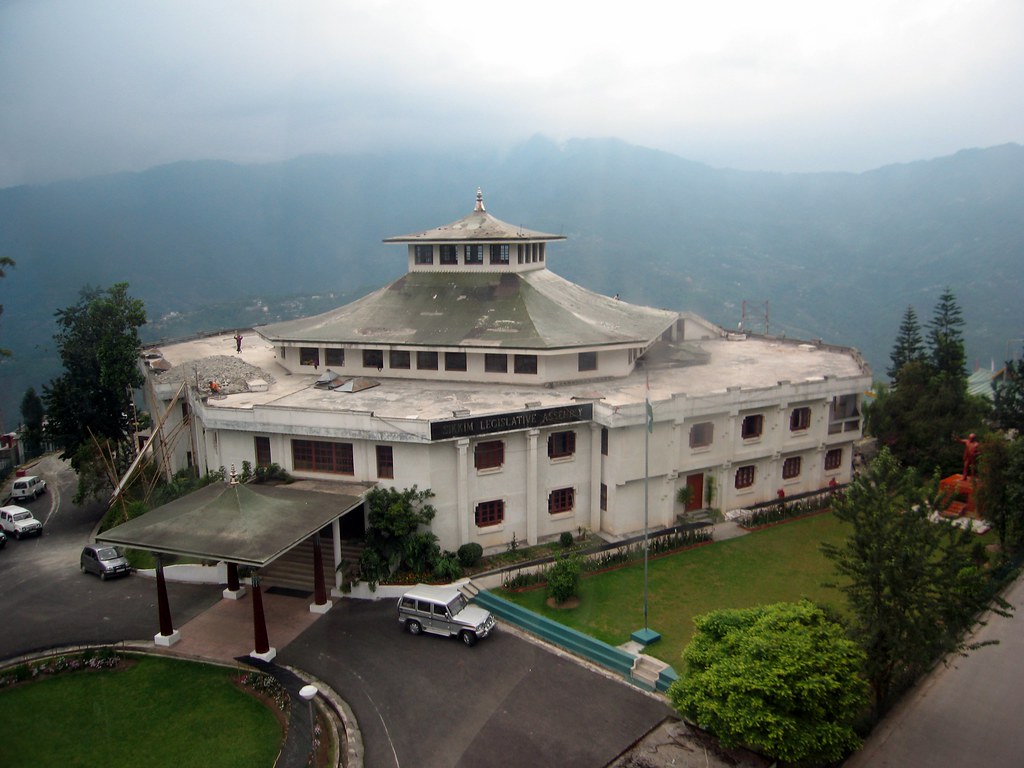 |
| Image: Flickr User - Kalyan Neelamraju |
By Ivan Lidarev
Forty years after joining India, Sikkim continues to trouble Sino-Indian relations.
As 2015 draws to a close, it is worth remembering that it marks a forgotten but important anniversary in the history of India and Sino-Indian relations. Forty years ago, in 1975, the princely state of Sikkim became part of India, following a long political game that saw Beijing try to lure the Chogyal, Sikkim’s king, away from New Delhi’s tight embrace. While India won out in 1975, the Sikkim issue has continued to trouble China-India relations to this day. China has not unequivocally accepted Sikkim as part of India, the Sikkim border between the two Himalayan giants remains a source of tensions, and both sides have interests in Sikkim which are often at odds.
Historically Sikkim – “new palace” in the Limbu language – was a small and pristine Buddhist kingdom in the Himalayas with close religious and cultural ties to Tibet. At different points in the eighteenth and nineteenth centuries the kingdom had lived under Chinese suzerainty and, later, as a British protectorate, but had mostly managed to preserve its domestic autonomy. India’s independence in 1947 and Tibet’s incorporation into the newly founded People’s Republic of China fundamentally changed the geopolitical situation of Gangtok, Sikkim’s capital, as it emerged as a buffer between its two giant neighbors. Concerned that China might expand its influence in Sikkim, Nepal and Bhutan, and even threaten India’s disputed northern borders, New Delhi pressured the three Himalayan states to establish special relations with India. Hence, in 1950, Sikkim signed a treaty with India which established the kingdom as an Indian protectorate, handed over all of Sikkim’s external relations to India, allowed the stationing of Indian troops and prohibited the kingdom from “dealings with any foreign power.”
In the 1960s, however, Sikkim reemerged as a major concern for New Delhi in the aftermath of India’s disastrous 1962 border war with China and the enthronement of a new Chogyal, Palden Thondup Namgyal, who sought full sovereignty for his Himalayan kingdom. The 1962 war, which saw action close to Sikkim, and the 1967 clashes between Chinese and Indian forces on the kingdom’s northern border, at Nathu La and Chola, underscored Sikkim’s strategic importance as a key military point on the disputed border. The Chogyal’s push to sovereignty, probably influenced by his American wife, inevitably led him to seek relations with China to balance India, an interest reciprocated by Beijing which hoped to lure Sikkim into its sphere of influence. Soon after the king’s accession in 1964, Beijing officially sent condolences for his father’s passing and the two sides cautiously came into contact on several occasions in the next decade, including, famously, on one of the Chogyal’s trips to Britain during which he met Chinese officials at a Chinese restaurant in an outright break with the 1950 treaty. As New Delhi was growing alarmed by the prospect of Chinese influence in Sikkim, the kingdom was increasingly being shaken by the struggle between the autocratic Chogyal and Sikkim’s democratic opposition which, cautiously backed by India, sought to curtain his power. This struggle came to a head in 1973, when law and order in Sikkim broke down and India moved its forces in to stabilize the kingdom and eventually mediate a compromise between the king and the opposition. Soon afterward, over Beijing’s ferocious protests, Sikkim’s new democratic assembly agreed with New Delhi’s proposal to make the kingdom an “associate state” of India. In 1975, probably provoked by the Chogyal’s desperate attempt to get Chinese and Pakistani help against India during a trip to Nepal, Indira Gandhi’s government pushed for a referendum which democratically approved the abolition of the monarchy and a full merger with India, after an amendment to India’s constitution. In spite of China’s indignation, Sikkim became a state of the Republic of India.
However, New Delhi’s success in 1975 did not close the Sikkim issue. Forty years after the former kingdom joined India, Sikkim remains a source of political and military tensions between China and India, with little prospect of this ending. There are three reasons for this.
Read the full story at The Diplomat
